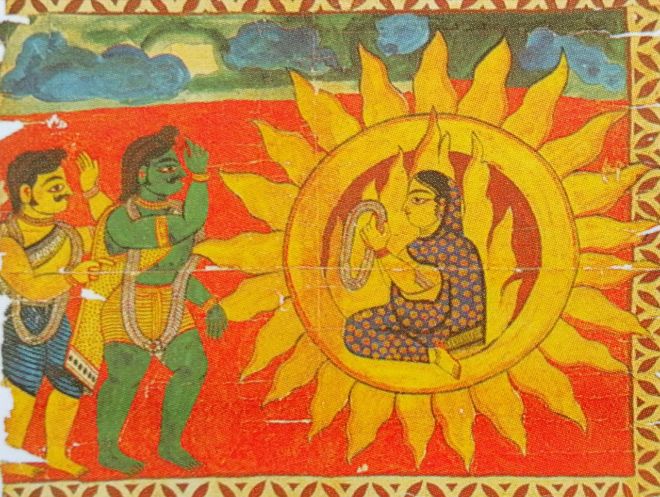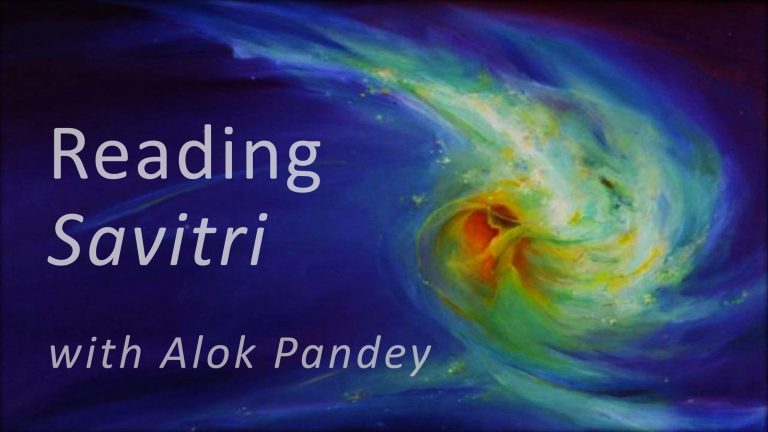 The work of this redemption has been undertaken primarily by Sita, the embodiment of Lakshmi. The Ramayana is as much a story of Sita as of Rama.
The work of this redemption has been undertaken primarily by Sita, the embodiment of Lakshmi. The Ramayana is as much a story of Sita as of Rama.
Though certain modern historians judging an ancient epic by modern standards and without going into its tremendous spirit see in her either a too virtuous a woman to be true or else a weak lady who is always at the mercy of her father or husband or the demon king or even a commoner whose one word is enough for her to be banished. But the Sita that emerges through all this is indeed a strong woman, stronger by the spell of adverse fate that has led a once princess and queen into the life of a sannyasini in the forest. It is her love for her husband that carries her there and she is willing to face every kind of danger. Then she is kidnapped by the Asura by deceit.
It is said that it was one of her divine strategies to bring him back and convert him through love. But the Asura is not yet ready for divine love. For him love is synonymous with lust. He must usurp and possess and fulfil the impulses of his body and vital rather than dive deep into his soul where alone true love can be found. To dominate, to possess, to crush everything that does not yield to his ambition, to stamp his ego on the whole world is his way. It is said that the whole story of Mayamriga (golden deer for whom she sent Rama hunting while Ravana kidnapped her) was done by deliberately putting upon herself the veil of avidya for a moment so that the Asura could come near. Otherwise Ravana would not have been able to touch her.
 The agni pariksha that she has to undergo later is clearly a symbolic story (unless we believe that a human body can survive fire which would mean a transformed body and not a humanly built one as it now is). It is a symbol of the purification that earth nature must undergo for its redemption having been stamped by the touch of the Asura. It is through this fire of aspiration and purification that the state of avidya (ignorance) can be converted into vidya (knowledge of truth and oneness).
The agni pariksha that she has to undergo later is clearly a symbolic story (unless we believe that a human body can survive fire which would mean a transformed body and not a humanly built one as it now is). It is a symbol of the purification that earth nature must undergo for its redemption having been stamped by the touch of the Asura. It is through this fire of aspiration and purification that the state of avidya (ignorance) can be converted into vidya (knowledge of truth and oneness).
She accepts all these ordeals willingly since she is born to redeem the earth which is suffering under the spell of the Asura, the hyper-intellectual man who has studied the Vedas, has some kind of a mental knowledge even of the truths that are contained therein and yet he misapplies them, uses even such profound things for his personal and egoistic ambitions. For such are the Asuras, – whatever intellectual ability and even religiosity they may have their real creed is the expansion of the empire of the ego.
This Asura in man is typified in Ravana, once a devotee of the Lord who has hence fallen due to his lust for power and wealth and wanton ambition. Though the main antagonist in the plot, he is not a villain to be simply weeded out of existence, if such a thing were at all possible. Killing Ravana is becomes inevitable only because he refuses to change his ways. The chance is given even uptil the last moments but he refuses and insists on his doctrine of might is right and hence Rama must take the challenge and fight him on his own grounds. With the fall of the Asura and the conversion of the animal the path of humanity is secured at least for a few millenniums until the necessity for the coming of another Avatara arises.
The work of Lord Rama and Mata Sita is rather to convert back the Asura and restore the forces and energies that have strayed from their real purpose back to their original divine purposes. In the end when she is banished we see a Sita grow stronger. While Rama suffers and is unable to bear the loss which has come in the course of following his Rajadharma of those times, Sita never allows a trace of bitterness or grievance enter her heart. Such is the beauty and strength of her love that she rears her two children with all grace and dignity and teaches them the way of nobility and courage.
She is indeed the ultimate feminine, strong and wise and patient and forbearing whose divinity shines more and more as she faces the challenges of earthly life. Later when her earthly mission is over she refuses to go back to the palace of a repentant Rama and prefers to be identified back with the earth out of which she has emerged. Even in her departure we see her great sacrifice wherein she redeems earthly matter by permanently merging with it rather than choosing either the comforts of the palace or the riches and splendour of her heavenly home.
In the early dawns of humanity Sita sets some of the highest standards of spiritual feminism and empowerment by awakening one’s own inner strength rather than following the Asuric impulse of a licentious life or an egoistic love that loves only as long as one is loved. If Rama embodies the strength born out of a spiritual manhood, Sita embodies the strength born out of true love.



